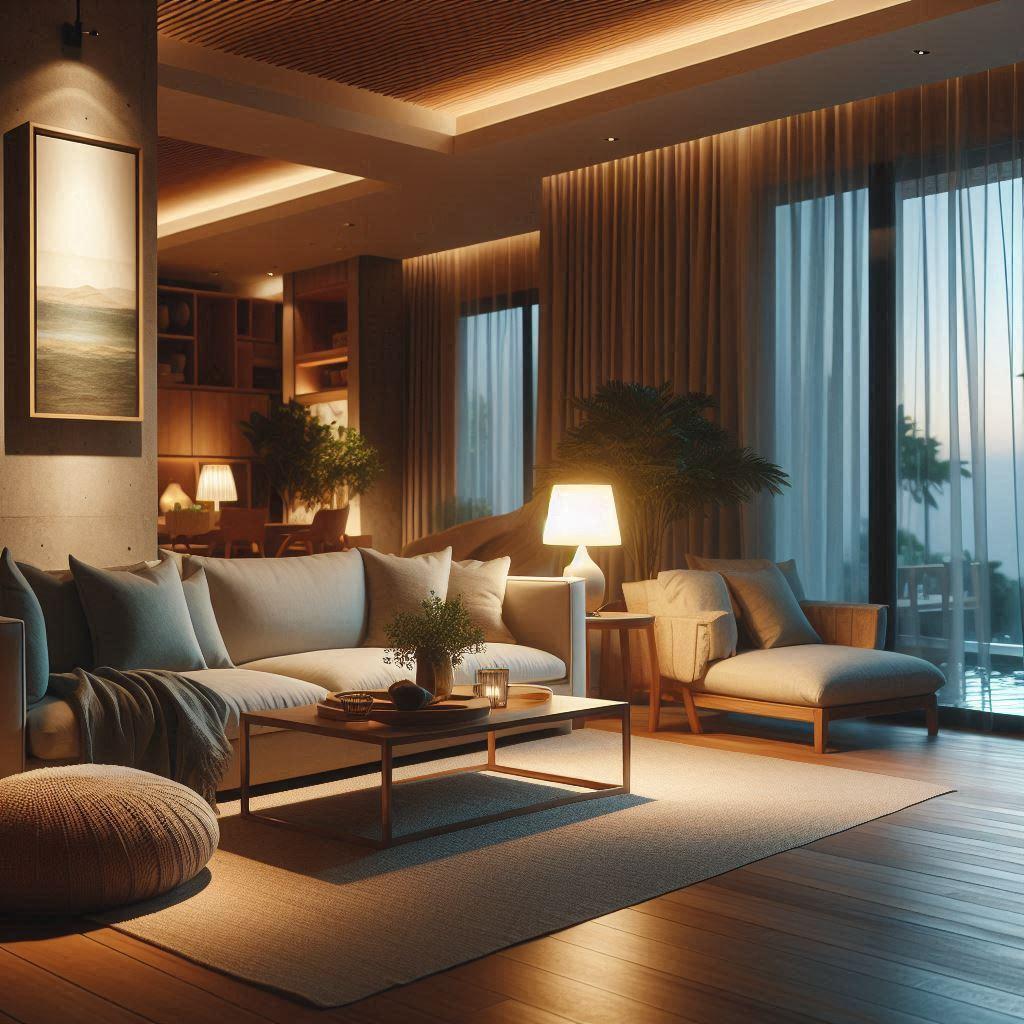
Imagine stepping into your home and it greets you with a symphony of music tailored to your mood. Smart technology transforms spaces into artistic havens. AI orchestrates audio-visual experiences, making ambiance a personal masterpiece.
You don’t need to be tech-savvy – easy-to-use advancements do the heavy lifting for you. These innovations promise richer daily living aesthetics that engage all senses.
Want a space that reflects every emotion? You’re in the right place.
The Role of AI in Enhancing Sensory Experiences
AI crafts sensory-rich environments by synchronizing light, sound, and even scents to match your mood.
Imagine an AI system adjusting lighting hues as music evolves throughout the day, providing a seamless backdrop for any occasion. Smart home devices now tailor every detail to heighten daily experiences.
You might find your morning routine becomes more invigorating with uplifting melodies and energizing aromas in sync with natural light patterns. These enhancements transform spaces into dynamic, living canvases that cater to personal preferences effortlessly.
Interactive Design: AI’s Impact on User Experience
Interactive design elevates user experience by weaving AI seamlessly into everyday living. Using apps and tools from Canva, you can create music with AI generator and pair it effortlessly with ambient artwork and mood-enhancing lights.
This synergy crafts a home environment that truly reflects your personality. As you navigate your space, lighting adjusts to match the visuals and melodies playing in harmony.
It’s more than technology – it’s about designing a personalized aesthetic that intuitively complements your lifestyle.
Collaborative Design: Humans and AI Working Together
In the realm of collaborative design, humans and AI forge innovative partnerships to shape living spaces. Designers harness AI’s analytical prowess while infusing their personal creativity to produce unique environments.
This synergy allows for data-driven decisions that elevate aesthetic appeal without compromising artistic vision. Imagine an architect collaborating with AI tools to predict lighting effects based on various furniture arrangements, leading to optimized layouts that reflect human ingenuity.
By combining technical insights with human creativity, this collaboration results in spaces tailored precisely to inhabitants’ unique desires and needs.
Overcoming Challenges in Smart Home Personalization
Personalizing smart homes presents challenges such as integrating diverse technologies and addressing privacy concerns. However, practical strategies can overcome these hurdles.
Consider these approaches to enhance your smart home experience without compromising on personalization or security:
- Unified Platforms: Choose smart home platforms that integrate various devices into a single ecosystem. This minimizes compatibility issues and simplifies control, letting you manage everything from lighting to security systems seamlessly through one interface.
- Data Privacy Controls: Prioritize solutions with robust privacy features. Use encryption and secure login protocols to safeguard your personal data from unauthorized access while enjoying the benefits of connected technology.
- User-Friendly Interfaces: Opt for systems with intuitive interfaces that allow easy customization. Simple navigation ensures all household members can tailor settings without needing advanced technical skills or extensive learning curves.
- Scalability Options: Select systems designed for scalability so they can adapt as new technologies emerge. This flexibility helps future-proof your investment by allowing integration of upcoming innovations without requiring a complete overhaul.
- AI Customization Tools: Leverage AI-driven tools that learn from user interactions to offer personalized experiences. These features anticipate needs, like adjusting ambient settings based on usage patterns, creating an environment finely tuned to individual lifestyles.
Bridging the Gap Between Technology and Human Emotion
Bridging the gap between technology and human emotion involves designing smart homes that resonate on a deeply personal level. AI enhances emotional connections by adapting environments to reflect individual moods and preferences.
Imagine arriving home after a long day to find the lighting, music, and even temperature tailored perfectly to your current state of mind. These personalized adjustments transform spaces into comforting sanctuaries rather than mere living quarters.
By focusing on how tech interacts with human emotions, designers create intuitive homes that not only meet functional needs but also enrich daily experiences.
Embracing Tomorrow’s Living Spaces
Smart technology and AI offer exciting possibilities for designing homes that cater to both functionality and emotion. By embracing these advancements, you create environments that respond intuitively to your lifestyle.
As technology continues to evolve, staying informed empowers you to enhance everyday experiences and craft spaces uniquely reflective of who you are. Your future home awaits!
- 1share
- Facebook0
- Pinterest1
- Twitter0
- Reddit0



